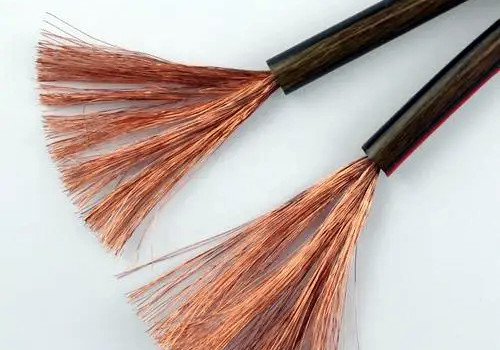Oxygen-free copper is a type of pure copper alloy which are highly refined to less than 0.5% oxygen concentration. In this state, the alloys retain their metallic properties but are free of oxygen and all pure copper alloys in an unoxidized (oxygen-free) form. Pure copper is highly reactive with moisture, making it unusable as an electrode in numerous electrochemical applications. The oxygen-free variety shows better resistance to oxygen and thus is used as an oxygen-free counter ionic conductor in many of the same applications as its oxygen-containing counterpart.
Conductivity and power dissipation are the two most important characteristics of oxygen-free copper (or simply Etp). The higher the purity, the lower the conductivity, but the higher the power dissipation also. Oxygen-free conductors with a lower pore size are more efficient than metal oxides with larger pore sizes and hence have better power dissipation. They also form excellent insulators and semiconductors. With proper vapor compression and cooling, oxygen-free copper can reach temperatures as high as 500 Kelvin under atmospheric pressure.
There are many benefits of using oxygen-free copper in industrial applications. One of its most notable features is its extraordinary electrical and mechanical conductivity. Copper has one of the highest electrical conductivity values among all known metals. This quality gives copper the ability to conduct a large number of electric currents easily. Thus, it is used for battery cables, induction coils, thin-film transistors, vacuum tubes, thin tube motor designs, induction heating furnaces, space heaters and in the heating system for space applications. Copper is also commonly used in electronic seals and sealings, valve trimming, hydraulic systems, marine applications, aerospace applications, medical devices, automobile and transportation mechanical applications, railway applications, communications, military applications, power supply applications, soldering methods, aerospace tooling and machine tools, aerospace and aeronautical applications, lighting applications, automotive applications, industrial applications, packaging methods and processes and other industries.
For this reason, high purity copper material is used in all aspects of industrial applications. Besides its high electrical conductivity rating, this metal is also able to exhibit excellent mechanical properties. It is able to form extremely hard and soft shapes, which makes it ideal for jewelry making, plumbing designs, auto parts production and CNC manufacturing.
Moreover, oxygen-free copper materials are highly conductive of electricity and also have high thermal conductivities when they are used as electrodes. This property allows for the use of oxygen-free copper in electronics. In addition, the metal’s surface tension gives it the ability to form both high tensile strength and hardness. When copper is formed into sheets, it can be formed into flat sheets, as well as ribbons that can be used for intricate designs. The metal is able to provide mechanical properties similar to those found in stainless steel and nickel alloy products.
An oxygen-free copper wire is useful in various industries, such as electronics and the electrical and electronics industry. It has the ability to create a more efficient current pathway in various kinds of electronic equipment. For example, it has the potential to help produce high-speed data transmission through the transfer of energy along its conducting paths. With this kind of characteristic, it has proven beneficial to the telecommunications and computer industries in particular. Its high bandwidth and low insertion resistance make it an ideal component for both circuit boards and speaker wires.
Because oxygen-free copper is able to exhibit electrical conductivity and mechanical properties similar to those of nickel and stainless steel, it can be used in a variety of industrial applications. For instance, it can be used to support corrosion resistance on motor bays, as it is both flexible and corrosion-resistant. It can also enhance the durability and usability of electrical connectors, especially when exposed to elevated temperatures. In addition to these industrial applications, oxygen-free copper can also be used in medical applications due to its antimicrobial properties. A study published in the Journal of Applied Materials found that the metal exhibits anti-bacterial and anti-tumor activity against a variety of pathogens, including influenza A virus, E. coli, and Pseudomonas aeruginosa.
Oxygen-free copper wire has become increasingly popular with both consumers and manufacturers due to its high-quality performance, along with its wide range of uses. Its durability makes it an excellent choice for speaker wires and other forms of electrical conductivity. Moreover, its purity means that there are no significant levels of toxic metals or contaminants. For instance, a high purity wire will be free of chromium, nickel, iron or tin. This means that it can be used in a wide range of electronics and industrial applications. Furthermore, it is an affordable solution for insulating cables and wirings.







